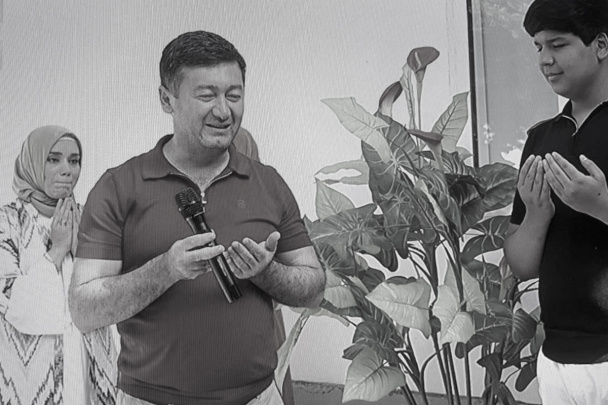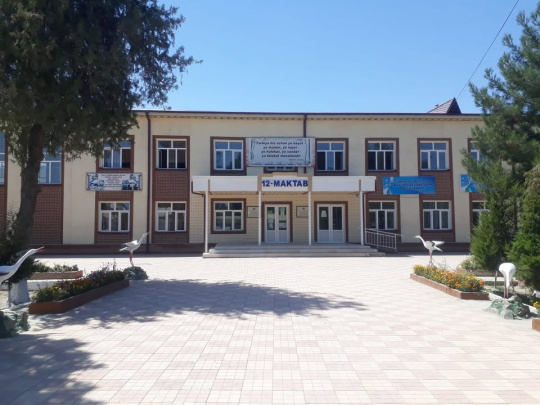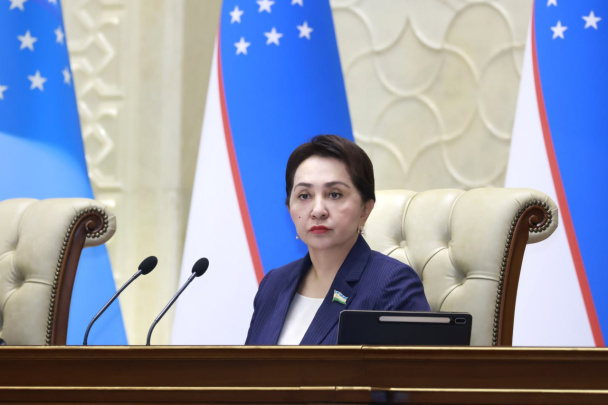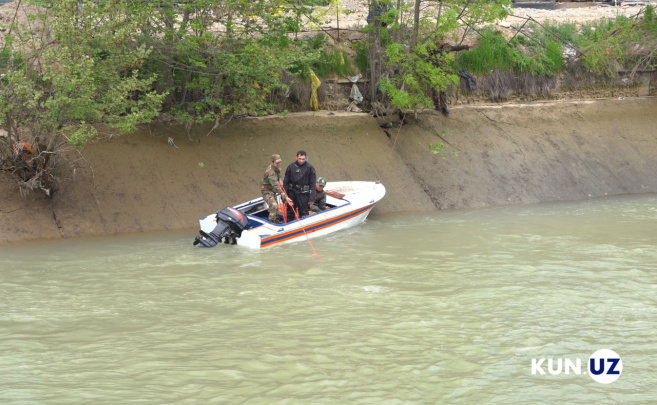Tragedy in Tashkent canal: Is public safety the last priority?
A man drowned while rescuing a girl from the Borijar Canal in Tashkent. Beautification efforts, which involved cutting down thousands of trees and ignoring basic safety standards, have left the canal’s banks dangerously slippery. From the outset, the project was carried out under a closed decision-making process and has sparked public backlash.
The tragic incident on May 5 highlights the consequences of unsafe reconstruction work on both banks of the Borijar Canal in Tashkent. The work saw the removal of thousands of trees and was conducted without adhering to safety protocols.
Around 18:00, in the section of the canal passing through the Belaryk neighborhood (behind the “Uzbekfilm” studio), a 43-year-old man drowned while trying to save children.
According to relatives, the deceased, Abdumannop Samikov, was a skilled swimmer. However, the lack of trees along the bank, replaced by slippery concrete, and the absence of emergency exits at critical points contributed to the tragedy.
The reconstruction began last fall, but safety barriers were never installed. As a result, two girls around 7–8 years old accessed the canal bank. While one was dipping her feet in the water, she slipped and fell in. The current swept her to the middle of the canal. Her friend jumped in to help but was also carried downstream.
Darya Grapinenkova, a local resident who heard the children’s screams, tried to calm the girl who had jumped in and handed her a stick. However, the slippery concrete and other difficulties prevented her from pulling them out, and the girls continued to be carried by the current. It was then that Abdumannop Samikov jumped in to save the first girl.
His stepson, Saidakbar Abduvaliev, described the events:
"My father brought the girl close to the edge. I started handing him sticks and wooden planks to help. It didn’t work. Then he shouted for a rope. The current was strong. I didn’t have time to run home to get a rope. I saw my father growing weak. I jumped into the canal myself and grabbed the girl. I thought, if I got tired, I’d pass her to my father and we’d take turns getting her out. The concrete was extremely slippery. Then our neighbor Sasha tried to help like I did, even threw a log into the water. We climbed onto it. That’s the last time I saw my father."
Two nearby stable workers arrived with a rope and first rescued the children, then Abduvaliev. A local officer arrived on site, and Abduvaliev called emergency services and the Ministry of Emergency Situations.
"The emergency workers were inactive; it took them 40 minutes to an hour to arrive. They split up on both sides of the canal. When we asked where the diver was, they calmly said he was coming. When my mother asked who would go in to find him, they just shrugged," said the victim’s son.
Abduvaliev believes the tragedy could have been prevented if stairways were built every 100 or 200 meters along the canal.
"We used to swim here when the trees were still standing. Now it’s completely unsuitable. I’m not the only one opposed to this project – everyone is," he added.
The body of the deceased was found around 11:00 p.m. near the back of the 16th City Hospital, about 3.5 km from where he had entered the canal.
The victim’s wife, Surayyo Makhkamova, said that even in the days following the incident – specifically on May 7 – schoolchildren continued to swim in the canal. She reported it to the emergency number 102, but no one responded.
"After my husband died, kids kept coming to swim. They tied ropes to steel rods and jumped in. I warned them off the first day. They came back the next day. I called 102 and said, ‘Just days ago my husband died here saving a child, and now kids are swimming. Who’s monitoring this? If something happens, the parents will suffer.’ But no one came or even called back. How many more deaths do they need?"
"They need to ensure safety here. There should be rescue tools in place. My husband didn’t jump in for fun; he died trying to save a child. If the old conditions were still in place, he would have made it out. If there were trees, they could have clung to the roots. He was a very good swimmer," she said.
She also noted that no officials had contacted her after her husband’s death.
"Only my son got a certificate of appreciation from school. One neighbor transferred 500,000 UZS to his card as thanks."
Darya Grapinenkova and Alexandra Makhsudova, who helped during the rescue, criticized the cutting down of trees for the canal’s beautification and the disregard for local voices.
"They should have done a tree inventory, but not a single tree is left. We weren’t warned. Work continued day and night. We opposed it, but you can’t always watch everything. After someone died, they installed fences – but only from the victim’s house to ours. The rest of the canal still has no barriers."
"It’s now very difficult to reach the water from above due to the excavation. Even during the incident, people couldn’t get down to help," said Makhsudova.
Grapinenkova said the neighborhood has been in conflict with officials over the beautification project since 2017.
"On April 27 this year, we sent appeals to the Senate, city government, General Prosecutor’s Office, and Yakkasaray District Prosecutor’s Office, warning that this area had become dangerous. We gathered signatures from all residents. Builders claimed they were just improving the area, but provided no documents. Everyone saw what was happening, but no one intervened. Bulldozers and excavators showed up. We resisted, but they tried to run us over."
"There were about 1,000 trees here. Now they’re building bike paths, cafes, shops, and promenades. But they never showed us the project. If it’s approved, there should be documentation. We live here – we deserve to know what’s happening," she said.
Kun.uz reached out to the main contractor, “Topalang HPD Holding” LLC, for comment, but they were unable to provide project details.
According to documents provided to Kun.uz by the Tashkent city administration’s “Single Customer Service” engineering company, the first phase of the project involves reinforcing 3.2 km of the Borijar Canal bank from Seoul Street to Choponota Street. This is based on Cabinet of Ministers Resolution No. 724 dated December 29, 2023, a closed decision.
The decision outlines the need to prevent potential risks due to bank erosion, ensure resident safety, relocate people from hazardous zones, and build green and recreational spaces along the canal.
The project is estimated at 140 billion UZS, funded by the state budget.
The customer claims that the current dangerous slopes will be addressed and the area made safe, but provided no further details.
The State Construction Supervision Inspectorate confirmed to Gazeta.uz that safety regulations were violated during the reconstruction. Their staff regularly inspected the site and issued written instructions on safety measures like barriers, warning signs, and restricted access to dangerous areas.
"Nevertheless, the contractor failed to meet all necessary requirements to prevent accidents, resulting in safety violations. In particular, the site was not properly guarded after working hours, and warning signs and barriers were either incomplete or absent."
Related News

17:39 / 03.06.2025
Tashkent man who saved drowning girls posthumously receives ‘Jasorat’ medal

11:51 / 17.05.2025
School fight in Samarkand ends in tragedy: One student dead, another hospitalized

12:05 / 20.09.2024
Senate Chair Tanzila Narbayeva vows continued assistance to families of deceased workers in Boysun mine incident

19:02 / 20.06.2024



